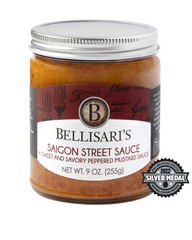
Even though we all like to eat strawberries year round, the best time to eat them is when they can be purchased directly from a local grower shortly after harvest. In other words, when they are in season. Fruits and vegetables are at their cheapest when they're being harvested, thanks to farmers' ample supply. Unfortunately, many home cooks associate fresh produce only with summer, but colder months bring lower prices for seasonal produce too.
Seasonal eating may seem like a recent trend, but it was the norm for generations, long before big grocery stores and farming advances. In today’s grocery stores, it’s normal to see the same produce available 365 days of the year. However, it does not mean that the produce quality is the same throughout the seasons. Here are four benefits of eating seasonal produce:
Richer flavor – Produce that is picked when it’s fully ripened tastes amazing. If your produce is coming from across the US or another country, it is picked before it’s ripe. As it travels to your local grocery store, it ripens in a cardboard box, often after being sprayed by chemicals to prevent it from ripening too quickly.
Better nutrition – When produce is picked before it’s ripe, the nutrients do not fully develop in the flesh of the fruit. Plants need the sun to grow, and picking them before they are ripe cuts off the nutrient availability. Genetic modification is also sometimes used, which can alter how the crop was naturally supposed to be consumed. Also, if you eat seasonally, you are guaranteed to consume a variety of produce; which will assist you in eating a balanced diet.
Cost efficient – Supply and demand simply explains how buying produce seasonally saves money. Produce in season is more abundant, so it is less per pound in the store. If you are buying produce that is out of season, there is travel time and added expenses to grow it in a greenhouse.
Environmentally friendly – As we truck in produce from other areas, it requires gas to get the produce to the store. This fuel charge is something often added to the price of the food upon delivery, not to mention what this does to the carbon footprint.
It’s time to find your fruit and veggie favorites. Now is the time for root vegetables including: turnips, winter squash, celery root, parsnips, sweet potatoes, carrots, and rutabagas. Luckily, eating seasonally does not have to be a 100 percent commitment. Choosing even one seasonal item will improve your nutrient intake, save you money, and help to save the planet!






